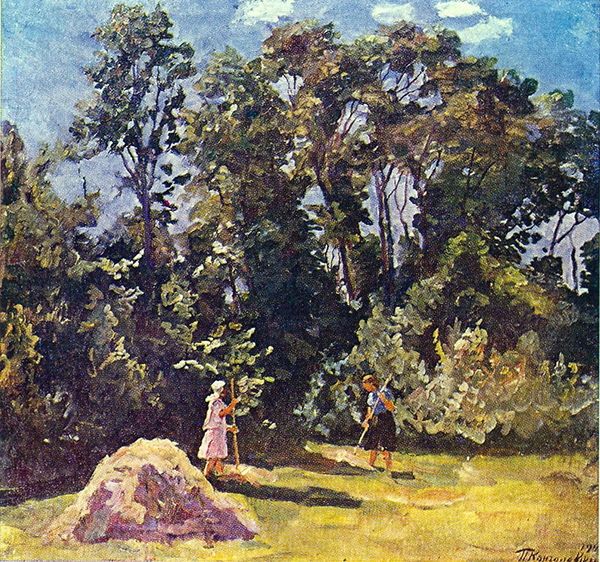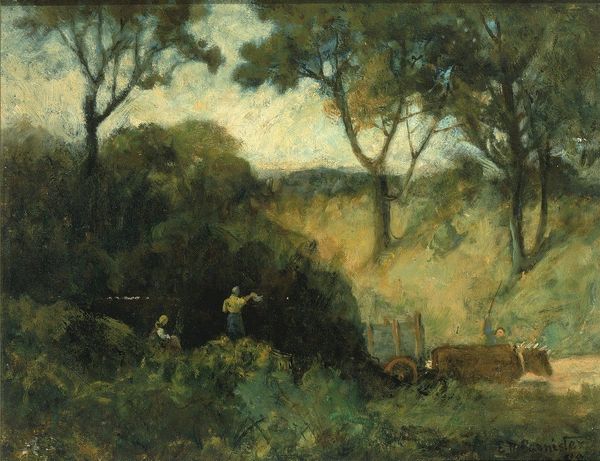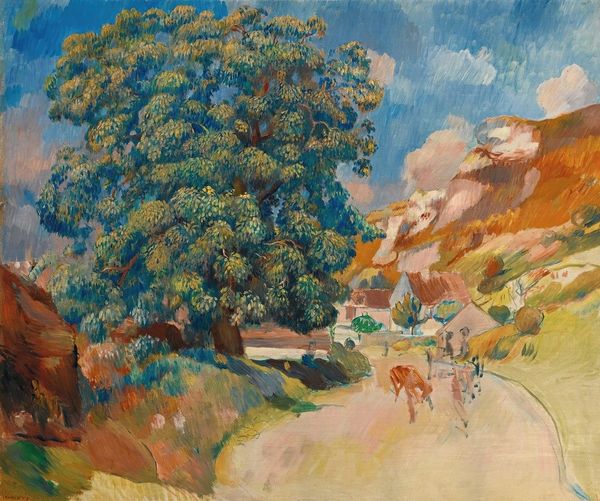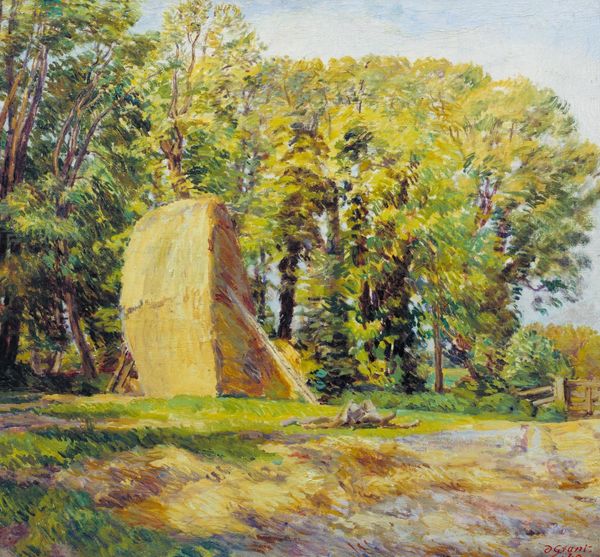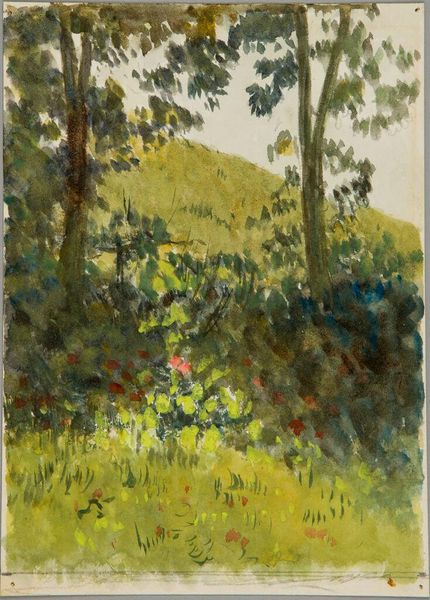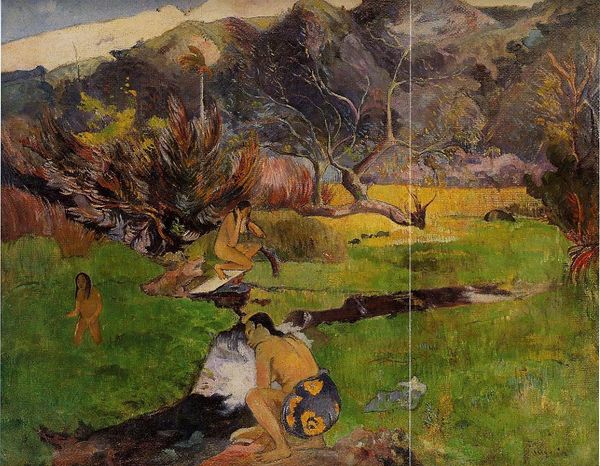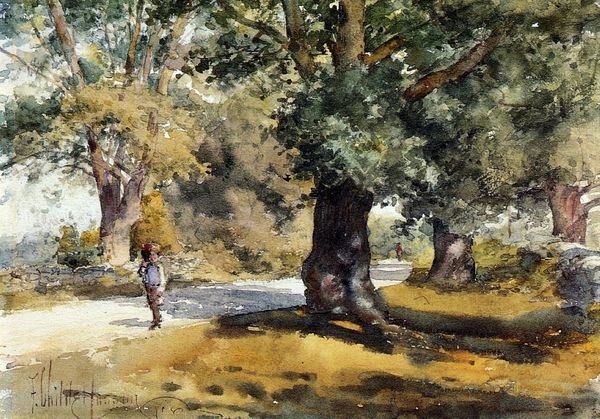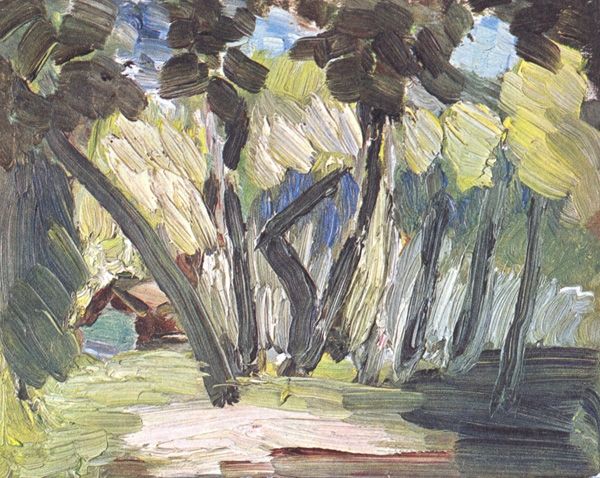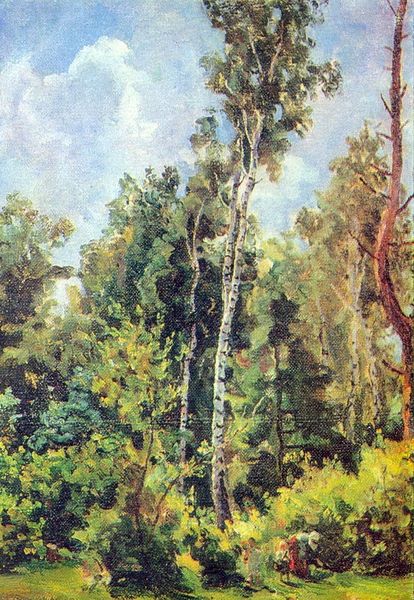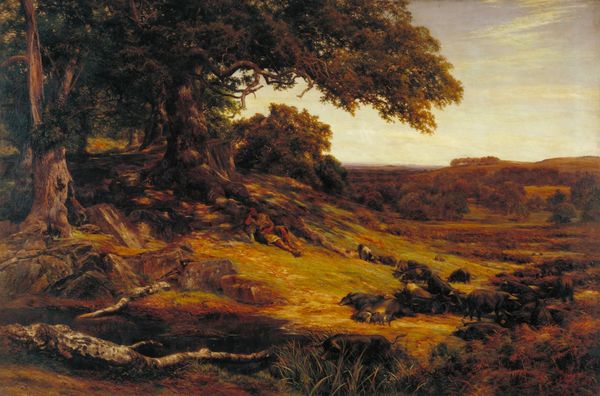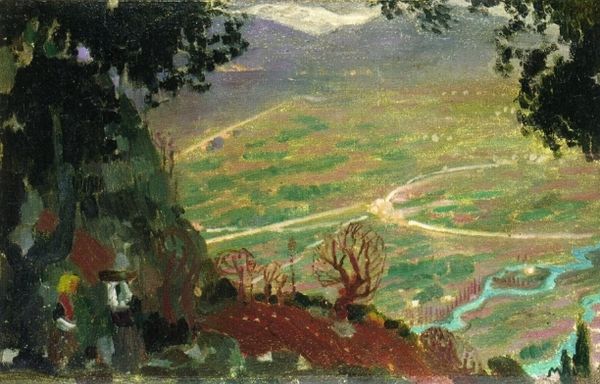
painting, oil-paint
#
tree
#
painting
#
impressionist painting style
#
oil-paint
#
landscape
#
soviet-nonconformist-art
#
impressionist landscape
#
figuration
#
oil painting
#
naive art
#
genre-painting
#
realism
Copyright: Pyotr Konchalovsky,Fair Use
Curator: Standing before us is "Haymaking," painted by Pyotr Konchalovsky in 1947. It’s currently held in a private collection. What strikes you first about this piece? Editor: I’m immediately drawn to the hazy atmosphere and the feeling of pastoral labor. There’s something almost dreamlike about it, despite the mundane activity depicted. Curator: Exactly. And if we delve into Konchalovsky's position as a member of the Soviet-Nonconformist art movement, we can appreciate how the genre-painting subverts the heroic, idealized images preferred by the state. These are ordinary figures engaged in everyday work, a direct break from socialist realism. The depiction doesn’t amplify their productivity in any particular way; it normalizes labor instead. Editor: That’s a great point. This image becomes about a normalized social scene and is devoid of any political statements; its message is delivered instead through the absence of an explicitly Soviet narrative. Even his almost Impressionist style stands in quiet contrast to social realism, particularly his brushwork in the depiction of the foliage. What’s the impact? Curator: In that sense, it certainly does, perhaps unintentionally, foreground an element of naive art with traces of Impressionist touches in the trees. The very act of representing ordinary labor becomes a form of quiet resistance within the constraints of the Soviet artistic landscape. There’s a kind of revolutionary ordinariness to it, that challenges prescribed heroic representations. Editor: I see it now. By depicting a normal summer day, the painting offers viewers an almost subversive glimpse into lived reality—not the grand, politicized visions favored at the time. What's the function, in this way, of portraying a woman working just as hard as her male counterpart in the same context? Curator: Precisely. When placed in the context of prescribed images during its era, it certainly delivers something more. It creates space for us to reconsider accepted values related to what art and everyday activities mean. Editor: It's so subtle. A quiet statement that speaks volumes when you know what to listen for. Thank you. Curator: A pleasure. These sorts of nuanced layers are exactly what make art so enriching.
Comments
No comments
Be the first to comment and join the conversation on the ultimate creative platform.
